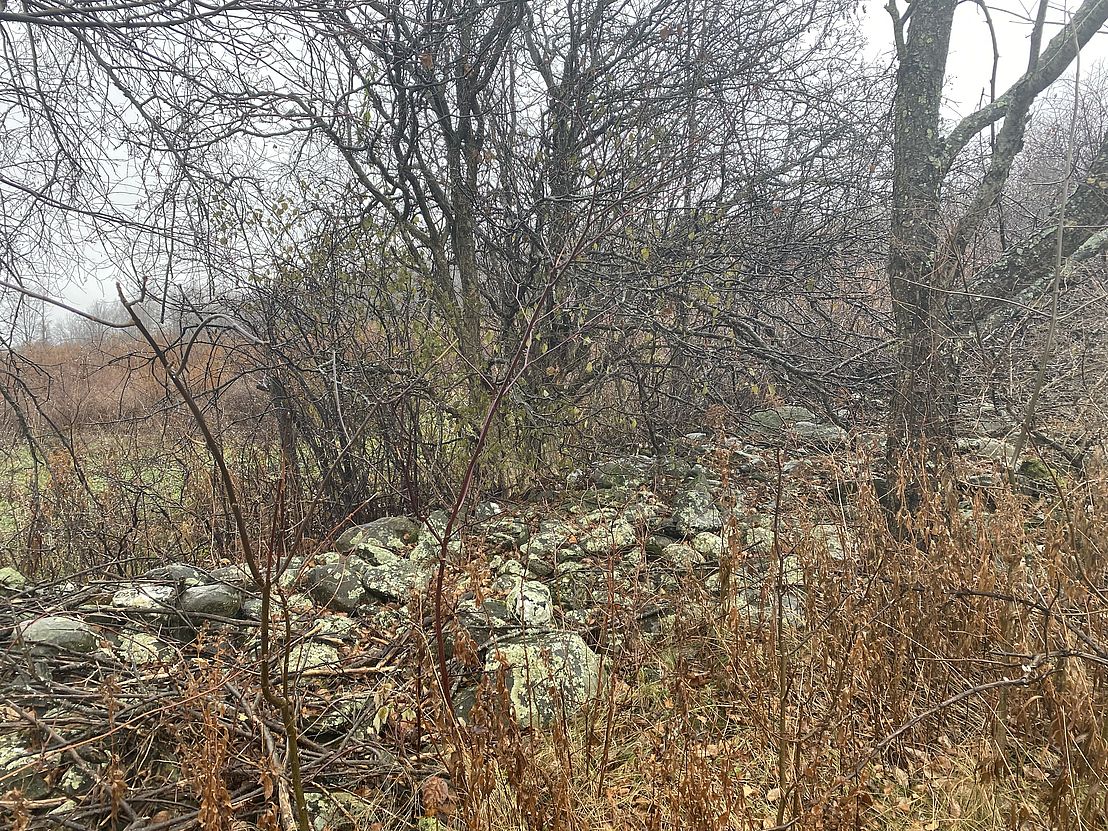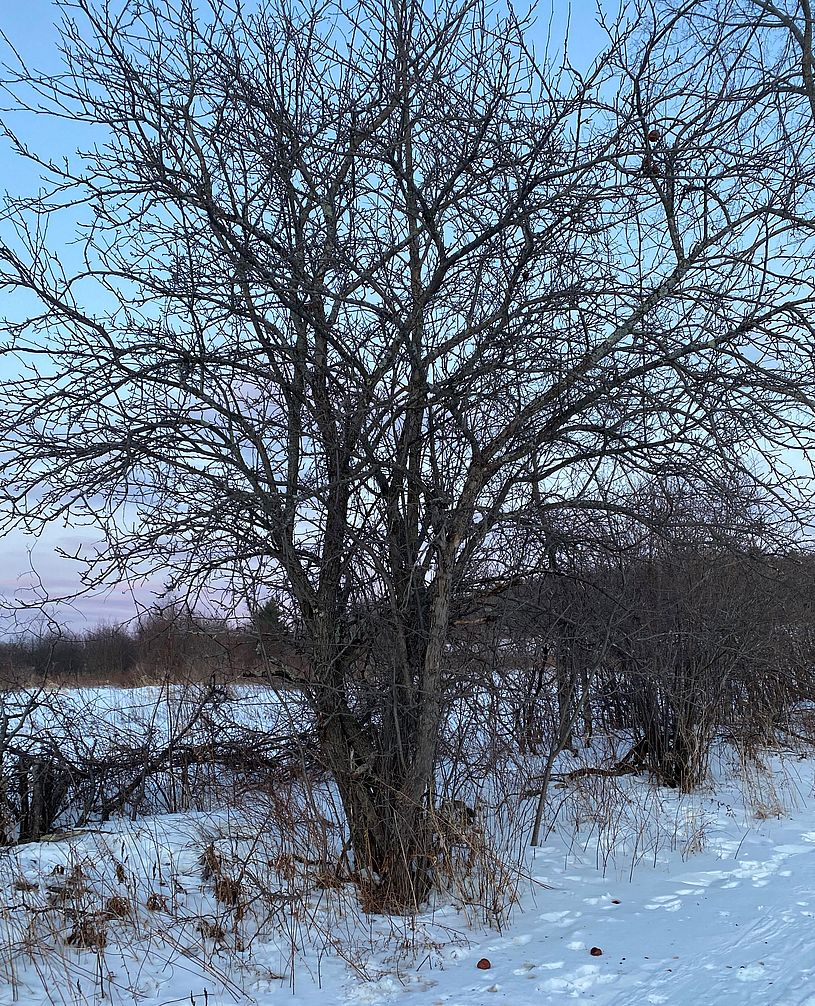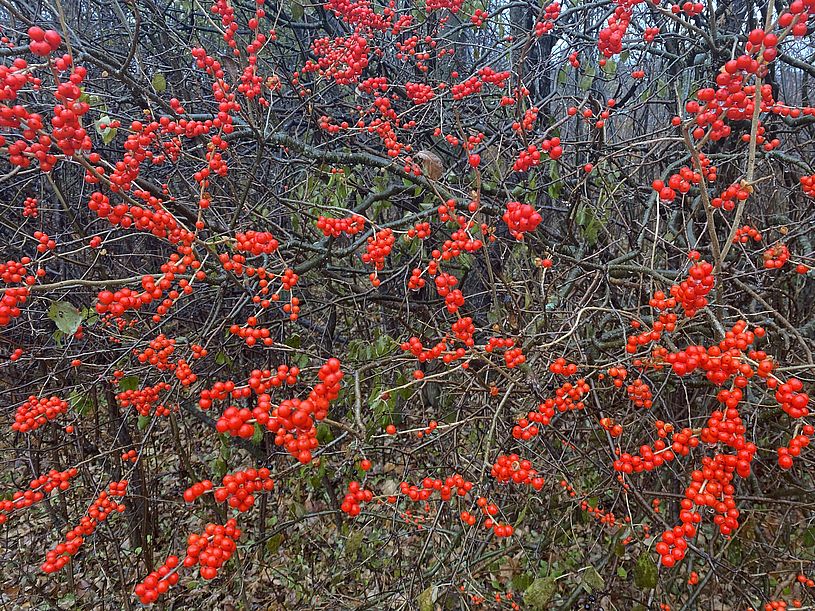Winterberry in the Hedgerow
This September, participants in CHC’s Enosburgh Woodlots program got a treat: Cultural Geographer Jane Dorney visited the group on a beautiful fall day. She brought along maps and images, and she told stories that painted a clear picture of the local landscape in various stages of history. At each stage, it became clear that nuances in the landscape drove where and how the human story unfolded, which in turn influenced the response of the land. Because Jane had researched the very parcel where we stood and its surrounding neighborhood, the presentation was dotted with voices from the audience. “That’s our house!” “That’s now the town gravel pit!” Participants went home with new eyes for their land, seeing every hedgerow and stone wall for the story it told about the people who came before us–and how they influenced the forest here now.
Here, we reprint (with permission from the author) one seasonally-appropriate article from a column called Connect the Dots that Jane writes for the Vermont Community Newspaper Group. Her writing is also found at https://janedorney.com, where those interested can sign up to receive new posts as they are published. Enjoy!
Connect the Dots: Winterberry in the Hedgerow
Q:What role do hedgerows play in the landscape?
A:Once the leaves were off the trees, I knew it was time to head out to my favorite high meadow to cut a few twigs of winterberry. Its bright red berries add some winter cheer to my kitchen table and my annual trip is a chance to see what’s happening in the hedgerow along the way.
I headed up through the woods, crossed the hayfield, then started toward the hedgerow. The monochromatic hayfield underfoot contrasted with the hedgerow’s eclectic variety of young leafless brown and gray trees and shrubs, woven together with climbing vines. As I neared the hedgerow I could see something much older peeking through the gaps in the thick vegetation - a broad stone wall. On the far side of the wall was an old pasture. In this group of features I could read parts of three centuries of shifting land uses that enriched my journey.

The tangle of hedgerow plants dominated the foreground as I walked, but the stone wall was the critical feature that anchored the interwoven stories here. Sections of this stone wall were probably 200 years old, since this farm had been operating in the early 1800s. Typically, nineteenth-century walls were built around the edges of the cultivated fields using the stones heaved up out of the soil by the winter frost. Farmers moved the stones before their yearly plowing so they didn’t harm their plow blades. The three-foot-tall wall was a barrier to my movements, so it was easy for me to remember their original role - they kept the farm animals out of the cultivated fields.
The hedgerow plants were much younger than the wall. A lone, tall elm was probably the oldest. In the early farming days, the edge of the field along the wall was kept clean of seedling trees or shrubs by hand cutting or burning. This meant the wall could be repaired as needed, and made it easier for farmers to keep an eye on their crops and livestock. But in the twentieth century, this elm may have been intentionally left to create some shade for the cows in the pasture.

The rest of the trees along the wall were a young mix of species, including birches, poplars, red maples, and a volunteer apple tree. Most of them were pressed against the stone wall in the narrow zone the haying equipment couldn’t reach. As the twentieth century progressed, the maintenance of walls was let go. The trees that sprouted were mostly wind dispersed species, but the deer prints and chewed fruit I saw near the volunteer apple tree reminded me that some of the trees were spread by mammals. I even had to step over the occasional coyote or fox scat.
Shrubs and vines filled in between the trees and exerted their varied personalities. The brambles had already been picked clean by birds, but many other shrubs brought splashes of color with their vivid tones of late season berries contrasting with the neutral tones of the leafless branches. Red rose hips held onto the tips of their twigs, dark blue wild grape bunches cascaded over other plants, and nannyberry twigs sagged with their pendulous heads of indigo berries. A chipmunk with bulging cheeks poked its head up between some stones and I gave it a nod, realizing its predecessors may have brought the original shrubs’ seeds it was enjoying now.
I kept walking along the wall toward the top of the high meadow where the woods began. Here were the winterberry shrubs in their full glory. Winterberries are Vermont’s only native, deciduous holly. I cut a few berry-loaded twigs to take home, then turned to enjoy the view below.

All the features were laid out together: the hayfield, the hedgerow, and the old pasture in the foreground, and the patches of woods below and above. I realized that though the stone wall anchored the scene before me, the role it played had dramatically shifted through time. Instead of being an exclusionary barrier to farm animals, it had become an animal travel corridor providing food and cover.
What I saw before me resonated with the Vermont Fish and Wildlife Department’s recent announcement that it was adding hedgerows to their digital maps used for conservation planning. Research is showing that many animals use hedgerows as corridors to move between large blocks of intact forests, and researchers expect hedgerows to play an increasingly key role in the migration of animals as they adapt to climate change.
It gave me a lot to think about as I wended my way home with my winterberry twigs in hand, soon to be placed in a vase on my kitchen table and enjoyed for months to come.